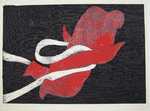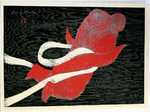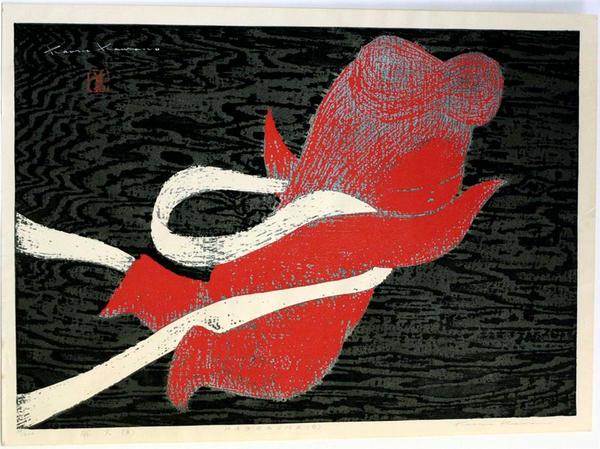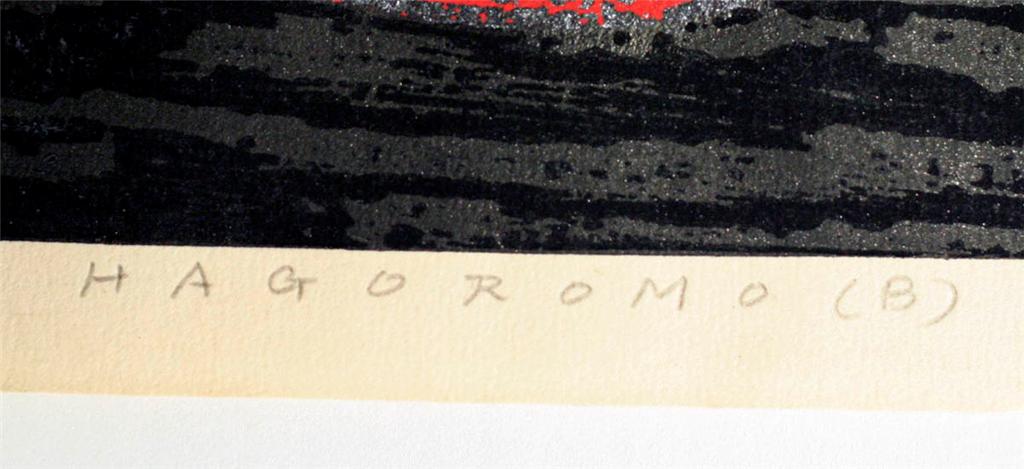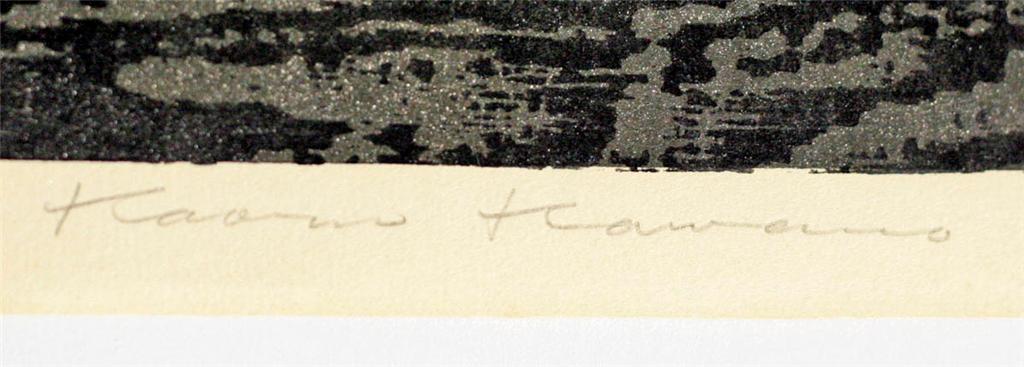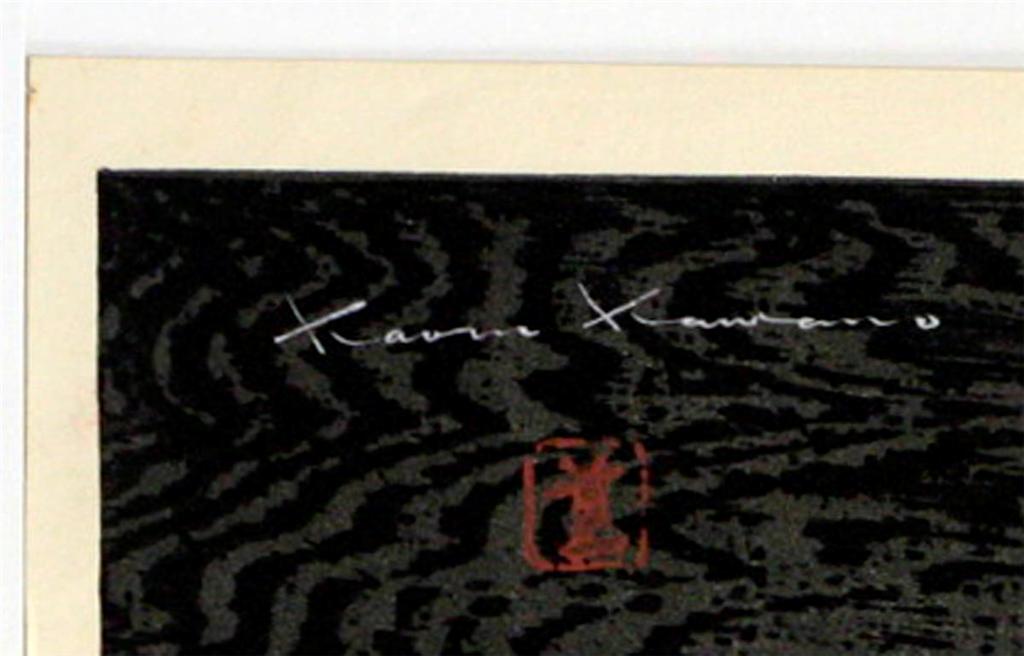| | |
| Artist: | Kawano Kaoru (1916-1965) — 河野薫 |
| Title: | Hagoromo B — 飛天(B) - Hiten |
| Series: | |
| Date of first edition?: | Not set |
| Publisher (first edition)?: | Self |
| Publisher (this edition)?: | Self |
| Medium (first edition): | Woodblock |
| Medium (this edition): | Woodblock |
| Format (first edition): | Double Oban
|
| Format (this edition): | Double Oban |
| DB artwork code: | 41005 |
| Notes (first edition)?: |
| Note: the depicted character is a "Hiten" (the Japanese title), celestial maidens that fly around and worship Buddhist gods. The English title "Hagoromo" refers to the magical feather-mantle of a tennin (an aerial spirit or celestial dancer). |
|
| Notes (this edition)?: |
| The following information was taken from the original web listing of this artwork. Note that there may be some inaccuracies:
Thursday, 15 November 2007
This is a rare, limited edition of 2 Kaoru Kawano woodcut prints, a very rare 2 print set. These prints are titled “HAGOROMO (A)” and “HAGOROMO (B)” and are hand signed and numbered in pencil on the lower border. These prints are vividly colored and we do not think are damaged in any way. We are not experts and we are selling this for a friend.
Kaoru Kawano is a noted Japanese artist who we believe departed us around 1965. These prints seem to have everything going for them, the artist name is in the images, the prints are hand numbered 19/200 in pencil on the lower left hand border, they are both also signed in Japanese next to the numbering, they are clearly titled in the center and his name in English is clearly spelled on the lower right hand corner. On the reverse of the prints there is a label that says “SELF-CARVED SELF-PRINTED KAORU KAWANO” and appears to have an artist mark.
These are beautiful prints that we do not believe have been trimmed, they measure 24 x 17 inches, we do not know the original color of the paper but at this time the white appears to have a light brown tone to it. |
|
| Artist Bio: |
Kaoru Kawano was a very popular artist for his distinctively styled depictions of figures, especially children. He uses the wood grain patterns to lender the textures and the mood to the works.
|
|



